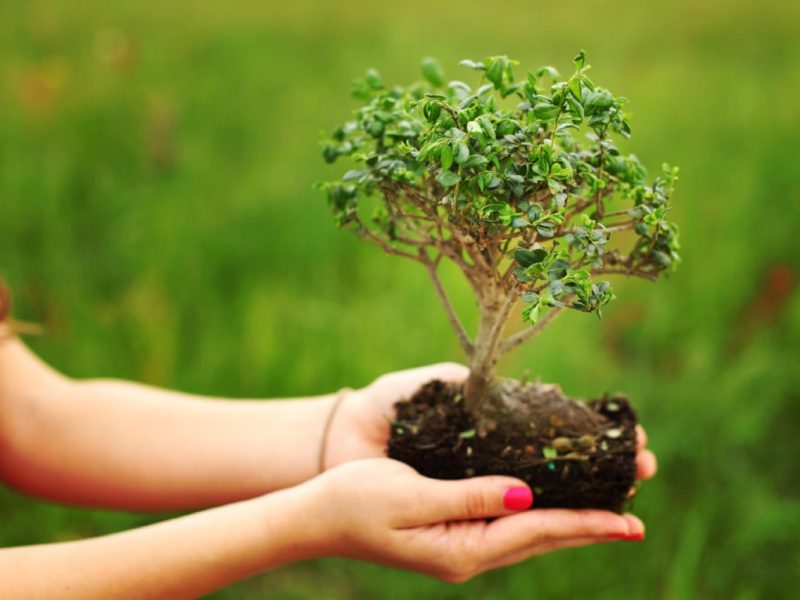Bonsai is the art of growing dwarf trees. It originated in ancient China, when many people could not afford extensive, full-sized gardens, they created scaled-down copies of them. From here, the art of growing bonsai was born. Its graceful and miniature forms captivate many, and those who dare to have one should learn how to care for it.
How to take care of it?
When buying a bonsai, you must remember that it is a plant that requires painstaking, careful and long care. However, all the effort invested in it will pay off in a hundredfold.
Here are a few things to keep in mind:
- Temperature
- Lighting
- Watering
- Fertilizer
- Diseases and pests
Temperature
Bonsai trees have different temperature requirements, depending on the plant, but on average they need 10-18 degrees. In addition, bonsai are sensitive to light, the more it is, the easier the tree endures the increase in temperature, if a little light, and the temperature should be lower.
In winter the bonsai trees should be placed on a balcony where the temperature is about 15 degrees. With the beginning of spring, when the temperature will be higher than 10 degrees, bonsai trees should be brought out into the open air.
And at the end of the summer it is very important to bring the plant inside, so as not to have a sudden change in temperature when the cold weather starts. In addition, the bonsai should be protected from drafts and sources of strong heat.

Lighting
It is best to place the bonsai by a window that faces east or west, as these sides will be the most effective location of light. 2-3 times every four weeks, the plant should be turned around so that the leaves and shoots are fully developed and the light hits the whole plant evenly.
Poor light has a bad effect on the development of the tree. To ensure a sufficient amount of bonsai, you need to keep the plant in the light throughout the day, that is, do not cover the windows. Also, when the sun disappears, you can turn on a halogen or fluorescent lamp at a height of 50 cm.
Watering
Many experts point out that it is watering that is the most time-consuming part of caring for the plant. To a large extent, the frequency and amount of watering depends on what kind of soil is used.
Ideally, bonsai should be watered quite often, but in small portions. But this option does not suit everyone. But even here there is a way out. There is a so-called immersion method.
This method implies the following:
- A container with warm, but not hot water, larger in size than the one in which the bonsai is located, is taken.
- The plant is dipped into it and left for some time. However, you should take care not to overdo it. A sign that you need to take the plant out will be the disappearance of air bubbles rising to the surface.
- When this happens you need to get the vase in a tree, but hold a little to give extra water to flow, and then put the plant in place.
In addition to this in the summer to water the bonsai need at least two times a day. In winter, you need to reduce the frequency of watering to once a week, because during this period the plant goes into dormancy.
Before each watering, you need to check the soil for its dryness, because excessive moisture is also very bad for the tree. Only when the soil is completely dry can you water the bonsai again.
Fertilizer
Some kind of special fertilizers bonsai does not require. In order to provide it with everything it needs, ordinary mineral fertilizers for indoor plants will suffice. Once a month watering or dipping in a mineral solution, the soil of the bonsai will be saturated with everything it needs.
Diseases and Pests
Like all plants, bonsai are susceptible to various diseases, pests attack. To avoid this, you need to periodically inspect it.
If we talk about diseases, most often the plant is affected by gray rot or powdery mildew. As a rule, this occurs due to excessive or insufficient watering. Therefore, in order for the plant to recover it is necessary to adjust the watering schedule.
If the disease is already strong, you need to start treatment with fungicides. Of the pests for bonsai, the most dangerous are:
- aphids,
- spider mite,
- whitefly
- and thrips.
To save the plant, you need to spray it from a distance of 40 cm with special preparations. However, you need to be very careful with the dosage.
Bonsai is a great plant, for those who want to bring a piece of nature into their home. But like all living things, bonsai need care, it’s not a cactus that you can do without special care.
Bonsai is an art, but like any art it requires investment, which will turn into a beautiful thing that will please your eyes and make your home more comfortable.



